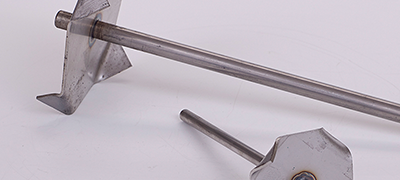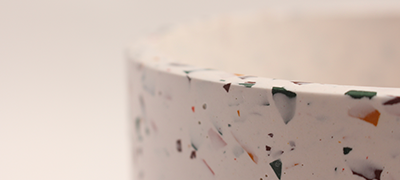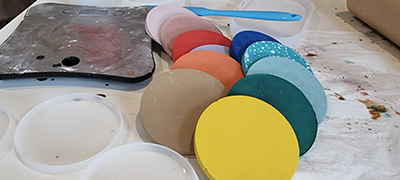Just like nail polish needs a clear top coat to help it last, Jesmonite needs to be sealed to protect the beautiful design that you’ve created. With our range of Polyvine Sealers, you’ll protect your work from UV rays, add durability to your piece, and make it splash proof and stain proof, meaning it can be wiped down with a damp cloth with no risk of damage.
Always do a test area before starting any project to assess product suitability and final finish. Follow the manufacturer’s instructions on the container at all times.
So what’s the best way to seal Jesmonite? With a brush? sponge? cloth? How much do you apply? More than one coat? Well, keep reading and you’ll find out all the answers you need to know!
WHAT YOU NEED
● Something to cover your work surfaces
● Clean, dry cup or mixing jug
● Mixing stick
● 1x dense sponge (a make-up sponge is ideal) or good quality paint brush
● 2x clean small dishes (that you don’t mind using for crafting)
● A choice of sealer for Jesmonite AC100
● Your Jesmonite piece (fully cured for 48 hrs and sanded)
● Plastic bottle (optional)
LET’S BREAK IT DOWN
1. Start by covering your work surface. It may sound a little excessive when you’re just sealing your work, but trust us when we say accidents happen and you don’t want to be mopping sealer off your furniture! Also it’s good to check your work surface is thoroughly clean and free from any grease or oil that could stain your finished piece.
2. We’re going to start by focusing on the first coat, which should be diluted to help it bond with the Jesmonite. Ensure the product is well mixed. Do not shake. Place your clean, dry jug on your weighing scales and set the scales to 0 grams, then weigh out the amount of sealer you want to use. We’d suggest starting with 10 grams which will be enough to seal one oval tray.
Pro Tip: Remember with sealer, a little goes a long way so you can either dilute a smaller amount for right now, or make more and store it in a plastic bottle so you don’t have to repeat this process every time you seal.
3. Next, you’ll need to add some water to the sealer you’ve just poured into your jug. You need to add 10% water, so if you’ve measured out 10 grams of sealer for example, you’ll need to add 1 gram of water.
4. Give it a mix using a mixing stick to combine the water and sealer.
LET’S GET STARTED!
1. Decant a small amount of your diluted sealer into your small dish. Apply one thin coat of the sealer and water mixture to your piece using your sponge or brush. Smooth it all over your piece and then dab it all over to get an even finish.
Sponge vs Brush: We prefer to use a sponge to apply our sealer as we find it’s easier to get an even coverage with no brush strokes. Some people prefer using a high-quality brush as they find it’s not as messy as using a sponge, but try both and see which works for you!
2. When your piece feels touch dry (not completely dry) then it’s time to apply your second coat, but this time you’re going to use your undiluted sealer, straight from the original bottle. As with step five, decant a small amount into a separate clean small dish, and apply one thin coat to your piece using your makeup sponge or brush. Thinly apply 2-3 coats for maximum protection.
3. Leave your piece to dry completely before using it or selling it. Allow 1-2 hours between coats. Will be fully cured in 5 days.
Now you have your completely finished Jesmonite creation and learned how to seal your Jesmonite AC100! Keep it, sell it or gift it. It’s ready to be used, loved and adored!
Why not check out our other guides? From terrazzo to marbling, colour mixing to
troubleshooting, there’s heaps of content to help you on your Jesmonite journey.
For more helpful info see: Jesmonite.com


